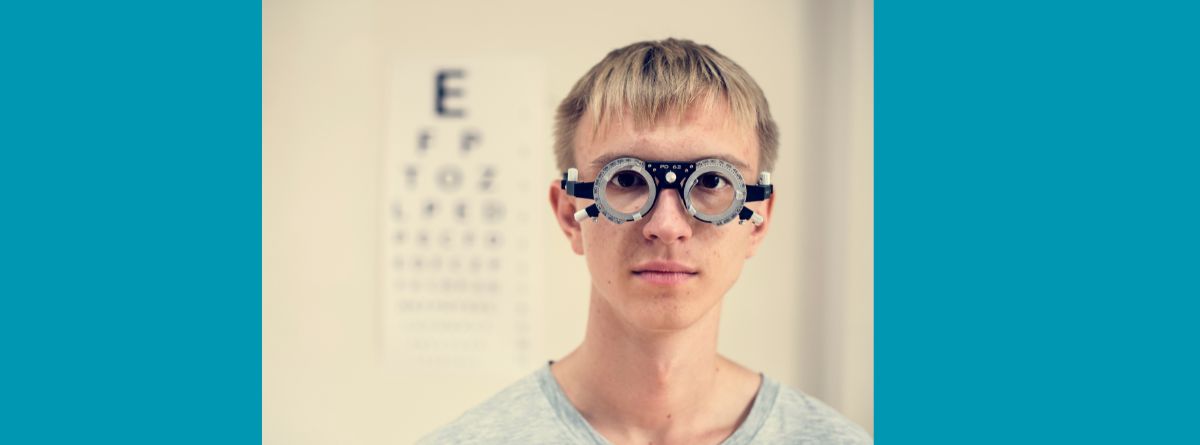
What is a Comprehensive Eye Exam?
A comprehensive eye exam is a thorough evaluation of your vision and overall eye health. It involves a series of tests designed to assess the clarity of your vision, the functionality of your eye muscles, and the health of internal structures like the retina and optic nerve. These exams not only help update your prescription for glasses or contact lenses but also play a crucial role in detecting early signs of eye diseases such as glaucoma, cataracts, or macular degeneration. Let’s explore what’s typically included in a comprehensive eye exam, how it differs from other types of eye exams, and other common questions.
What's Usually Included in a Comprehensive Eye Exam?
A comprehensive eye test involves several procedures to evaluate different aspects of your vision and eye health. Here’s what’s typically included:
- Visual Acuity Test: This measures how well you can see at various distances, often with the help of a standardized eye chart.
- Refraction Test: Determines your prescription for corrective lenses, such as glasses or contact lenses.
- Eye Muscle Test: Assesses the coordination and function of the muscles that control your eye movements.
- Pupil Dilation: By dilating your pupils, your eye doctor can examine the retina, optic nerve, and blood vessels more thoroughly.
- Tonometry: This test measures the pressure inside your eyes, a crucial factor in detecting glaucoma.
- Visual Field Test: Checks for any gaps or defects in your peripheral vision.
- Retinal Examination: Involves inspecting the back of your eye, particularly the retina and optic nerve, for any signs of disease or damage.
These tests together provide a comprehensive understanding of both your visual capabilities and your overall eye health.
What's the Difference Between a Medical Eye Exam vs Vision Exam?
The terms medical eye exam and vision exam are often confused, but they refer to different types of evaluations. A vision exam (also known as a routine eye exam or regular eye check-up) focuses on assessing your vision and determining if you need corrective lenses. It includes tests like visual acuity and refraction to check for nearsightedness, farsightedness, or astigmatism.
On the other hand, a medical eye exam is performed when you have specific concerns about the health of your eyes, such as an eye infection, injury, or symptoms of an eye disease. This exam involves more in-depth diagnostic tests to detect and manage medical conditions like glaucoma, cataracts, or diabetic retinopathy. While both exams are important, a medical eye exam goes deeper into diagnosing and managing eye health problems, while a vision exam focuses primarily on correcting vision impairments.
How Long Does an Eye Exam Take?
A comprehensive eye exam typically takes about 30 minutes to one hour. The exact duration can vary depending on the tests involved and whether you need additional assessments, such as pupil dilation or a visual field test. For instance, if your pupils are dilated, the exam may take longer because it requires waiting for the drops to take effect. Overall, it's a relatively short appointment but crucial for maintaining long-term eye health.
Is the Contacts Exam More Expensive Than the Eye Exam?
Yes, a contact lens exam is generally more expensive than a regular eye exam. This is because a contact lens exam includes additional tests and measurements to ensure that contact lenses fit properly and comfortably. Your optometrist will measure the curvature of your eye’s surface, check the fit of the contacts, and provide a trial pair to ensure they work well for you. The additional steps and follow-up appointments typically make contact lens exams more expensive than basic eye exams.
How Often Should You Get an Eye Exam?
The American Optometric Association (AOA) recommends that adults aged 18 to 60 have a comprehensive eye exam at least once every two years. However, people with certain risk factors—such as a family history of eye disease, diabetes, or wearing contact lenses—may need to have an exam more frequently, sometimes annually. Annual eye exams are also recommended for children, seniors, and those with pre-existing eye conditions to monitor any changes in vision or eye health.
Does Health Insurance Cover Eye Exams?
Whether or not your health insurance covers eye exams depends on your specific plan. Many vision insurance policies cover routine eye exams and part of the cost for corrective lenses like glasses or contact lenses. However, not all health insurance plans cover comprehensive eye exams unless it is deemed a medical eye exam for a specific condition. Some plans may also offer limited coverage for eye exams as part of overall preventive care. It’s always best to check with your insurance provider to see what kind of eye care is covered under your policy.
A comprehensive eye check-up is an essential part of maintaining good vision and overall eye health. By regularly visiting your eye doctor, you can catch potential issues early and ensure that your vision stays clear and healthy for years to come. Schedule your eye exam today!


